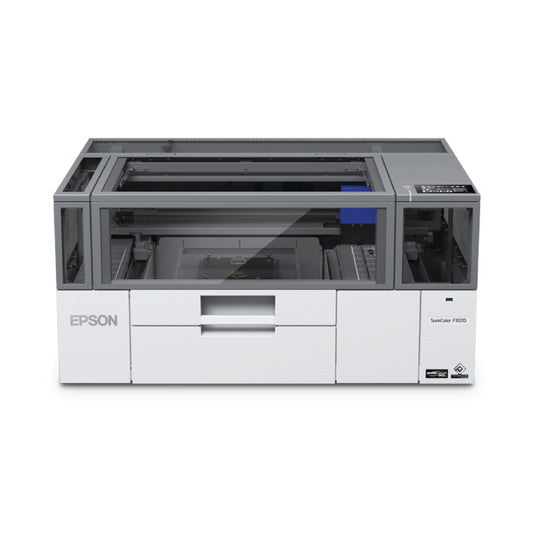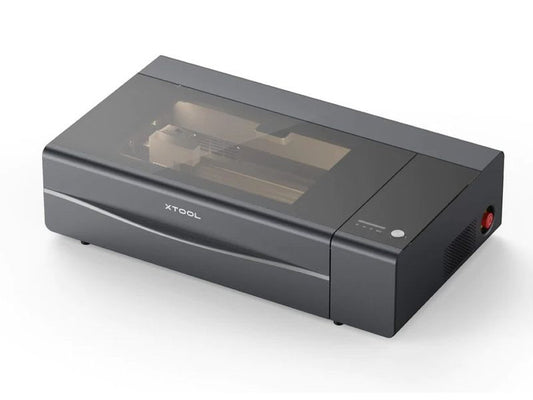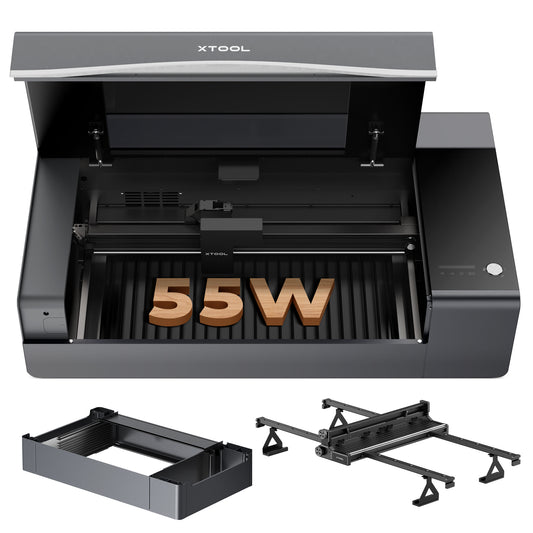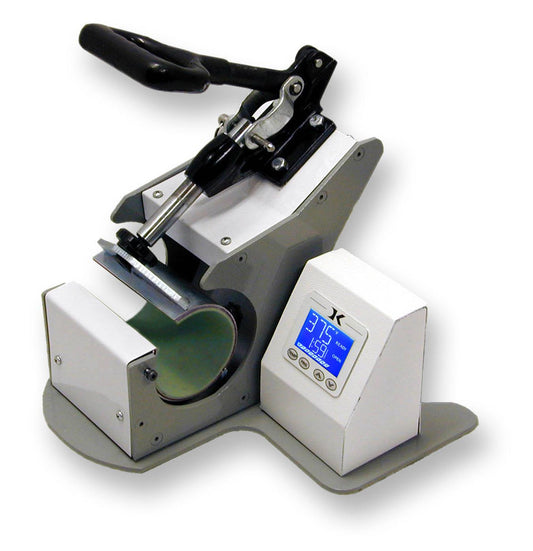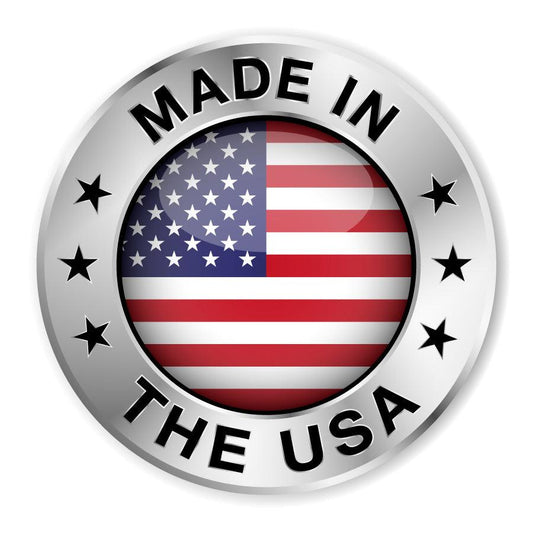UV printing is a type of printing that prints a design onto a substrate with UV ink, then immediately cures it with a UV-LED light. You can print on almost anything with a UV printer.
People choose UV printing because it's fast, easy, and environmentally friendly. 🌱
Keep reading to learn all the facts you need to know to get started with this amazing printing method. 👇
What's Inside:
- What is UV Printing?
- Why Choose UV Printing?
- UV Printing vs Other Methods
- How to Make Prints with a UV Printer
- Should You Invest in a UV Printer for Your Business?
- Get Started With UV Printing This Year! (Introducing a new, affordable UV printer from Epson)
- Frequently Asked Questions (FAQs)
What is UV Printing?
UV printing is a printing method that uses UV ink.
The unique thing about UV printing is that you don't need to cure the print with heat to make it permanent. The printer shines a UV-LED light over the prints, curing them instantly and making prints permanent and durable.
That means that as soon as you pull your item out of your UV printer, it's finished and ready to be used!
UV printers can print directly on practically anything from wood, to canvas, to glass, to acrylic, to paper, to fabric, and more. There's almost nothing you can't print on with this printer. But it's not as durable on fabric--for that, you're better off with a DTF, DTG, or sublimation printer.
UV printing is NOT the same as UV DTF printing. UV printers print directly onto an object, while UV DTF printers print onto film which are turned into stickers. However, you can use a UV printer to make UV DTF prints with some tweaks.
How Does UV Printing Work?
UV printing works because of the special UV ink that cures under UV light. The printer sprays the UV ink onto a substrate, then the UV-LED cures it and makes it bond tightly to the material.
This works on almost any surface, though some factors can make the UV ink stick better to some substrates than others. With some tweaks though, you can make UV printing work on virtually any surface.
What Do You Need?
You only need a few things to start with UV printing. They are:
- A UV printer in the right size for your item
- UV ink loaded into the printer
- Your item
- A computer with the right software for your UV printer (called RIP software)
- A design file
You don't need anything else. No special paper, powder, a heat press, or any other material. All you need is the printer and your object.
Note about UV ink: Some UV printers let you choose between flexible and rigid ink types. Flexible ink is best for items that need to bend, like leather. Rigid ink works for hard surfaces like tumblers. Some printers only have one type of ink to keep it simple.
What Can You Make?
Anything you can fit in your printer is usually fair game! We've seen people print on wood, canvas, golf balls, tumblers, pens, phone cases, shoes, toys, sporting equipment, and the list goes on and on.
The only things that are not recommended for UV printing are soft fabric and garments because UV ink isn't as durable on those materials. That said, you can print on anything you want as long as it fits into your printer bed.
Results may vary, so make sure to test out your item to see how it performs.

Why Choose UV Printing?
UV printing has so many benefits for your business!
First, this method is faster and easier than any other print method, including sublimation printing, DTF or DTG printing, screen printing, and more. There's no need for pretreating or applying heat to the print.
Second, you can print with UV ink on practically any surface, including dark-colored surfaces. That gives you a ton of options that you don't get with other print methods.
You can even print 3D textures with a UV printer because it can apply layers of clear varnish to create raised areas in the design. That means you can print Braille, too!
Another big benefit is that UV printing doesn't produce the toxic waste products you get with laser engraving, sublimation printing, DTF printing, and other methods. So it's more environmentally friendly than many other printing methods.
That said, there are some downsides.
First of all, UV printers take a lot of maintenance. You need to wipe them down every day so the ink doesn't cake onto the print heads. Then, you'll need to run a test print and "warm up" the printer every time you turn it on.
And second, UV printers can be expensive. That said, more affordable desktop printers are hitting the market right now. (We'll share one with you at the end of this article, so stay tuned for that! 👀)
UV Printing vs Other Methods
Here's how UV printing stacks up to…
-
Sublimation Printing: Sublimation printing only works on light or white materials and polyester or acrylic. On the other hand, UV printing works on practically any material. The upsides of sublimation printing are that it's more affordable, and you can achieve soft blends and watercolor effects that you can't really achieve with UV printing.
-
DTF Printing: With DTF printing, you apply powder and cure it to create a transfer. There are more steps, and the process creates toxic byproducts, so you need to wear protective equipment. DTF printers also require maintenance, just like UV printers. That said, DTF prints work better on clothing and fabric than UV printers.
-
DTG Printing: DTG printing requires a pretreatment and heat curing step, so it takes longer. Like UV printing, DTG printers print ink directly onto an item, but they are for garments and fabric only. This is a better method than UV printing for clothing and fabric, but it won't work on other materials like UV printing does.
-
Screen Printing: Screen printing is great for commercial-size print shops producing large amounts of the same design. But for screen printing, you need to make screens for each design that aren't easily changeable. UV printing is a digital method, which means you can print smaller batches more easily and customize prints for each customer.
- UV DTF Printing: UV printing and UV DTF printing are different. UV DTF printing creates a sticker, which can be applied to hard surfaces. Regular UV printing prints directly onto the object, which saves time. However, you can keep UV DTF prints for later or sell them as products, which you can't do with regular UV printing.
How to Make Prints with a UV Printer
It's pretty simple to make a UV direct print. Here are the steps!
Step #1 - Warm Up The Printer
First, warm up your printer following the manufacturer's instructions. You may need to wait a while, shake inks, and run a test print.
Step #2 - Set Your Item to Print
Place your item into the printer bed exactly where it needs to be for your design.
Step #3 - Load the Design
Open the design in your printer's printing software (called RIP software) and make sure all the settings are correct. This is where you adjust print colors, positioning, and more.
Step #4 - Print!
Once everything looks good on screen, it's time to print! Press the print button and watch as the printer creates your design and cures it immediately.
This can take anywhere from a minute to several minutes, depending on the complexity and size of your design.
And that's it! There's no final curing, drying, or pressing step. Once you take your item out of the printer, it's done!
Should You Invest in a UV Printer for Your Business?
This is the big money question for your business. Sure, UV printing is great, but is it something you want to invest in?
Here are some things you want to consider before buying a UV printer.
Cost: These printers are more expensive than sublimation printers and some laser engravers, so you'll want to factor in the cost of investment. Plus, the inks are not cheap.
Maintenance: Not only that, but they require daily use and maintenance to keep in working condition. You'll want to have a plan for maintaining the printer every day or other day, and having someone else who can manage it when you're away.
Market Advantage: Having a UV printer can really set you apart from other business owners since this is still an emerging craft method. You can print on practically anything, especially hard surfaces or paper, and you can create 3D textures, full-color photos, and more for your customers.
Productivity: It's faster and easier to create professional-quality items with UV printing over DTF, DTG, or even sublimation printing.
Safety & Environment: UV printing doesn't release harmful compounds into the air like these other methods.
All that said, if you can afford the investment and are excited to add a new offering to your business, it might be the right time to invest in a UV printer!
Now, we'll introduce Epson's new entry-level UV printer that brings the cost of UV printing WAY down to make it more accessible to small businesses and beginners.
Get Started With UV Printing This Year!
Let's be honest--UV printers are not cheap. A professional-grade printer will set you back $15K to $35K or more, not including the cost of ink.
That's why we're excited to announce a new UV printer from Epson that brings the cost down considerably, and that we'll be carrying in our shop!
We have known, loved, and used Epson printers for many years. We love their reliability and commitment to bringing professional print quality to all businesses and budgets.
Introducing the Epson SureColor V1070 Desktop UV Printer. It's way more affordable than most UV printers at just $8495. It fits neatly onto a desk or smaller workspace. And it makes the same gorgeous, high-quality prints that we've come to expect from Epson printers.
Plus, it makes maintenance easier with its automated cleaning system that wipes the print heads clean and purges ink into a waste tank that can be removed and thrown away easily.

We're excited to be offering this printer via pre-order very soon, so sign up for our mailing list below to be the first to get your hands on this ground-breaking printer ✨
Frequently Asked Questions (FAQs)
How long does UV printing last?
UV prints don't scratch or fade with time. They are long-lasting and durable! However, if you place them in direct sun, they can fade over time just like any other ink. A coating will help extend the life of UV prints.
Are UV and UV DTF the same thing, and can I print them with the same printer?
UV printing and UV DTF printing are two different things. UV printing prints directly onto a substrate and cures the ink with a UV-LED light. On the other hand, UV DTF printers print onto film and cure it with light, which is laminated and turned into a sticker. They are different printers, so choose a UV printer or a UV DTF printer, depending on what you want to make!
What is the lifespan of UV ink?
UV ink on your shelf will last a year or so in most cases. You'll want to check your ink's expiration date to be sure. UV prints, on the other hand, are super long-lasting and more durable than traditional inkjet prints.
Does UV printing rub or scratch off?
Nope! UV prints, once cured, are firmly bonded to the surface material and will not easily rub or scratch off.
Can you print on anything with a UV printer?
Basically, yes! However, you'll really need to test anything to see how it performs with a UV printer. Sometimes the surface of an item doesn't bond well with the UV ink, but you can use something called an adhesion promoter to make it stick better to the surface. That said, fabrics like clothing aren't recommended as UV prints aren't as durable on fabric as other types of prints.




